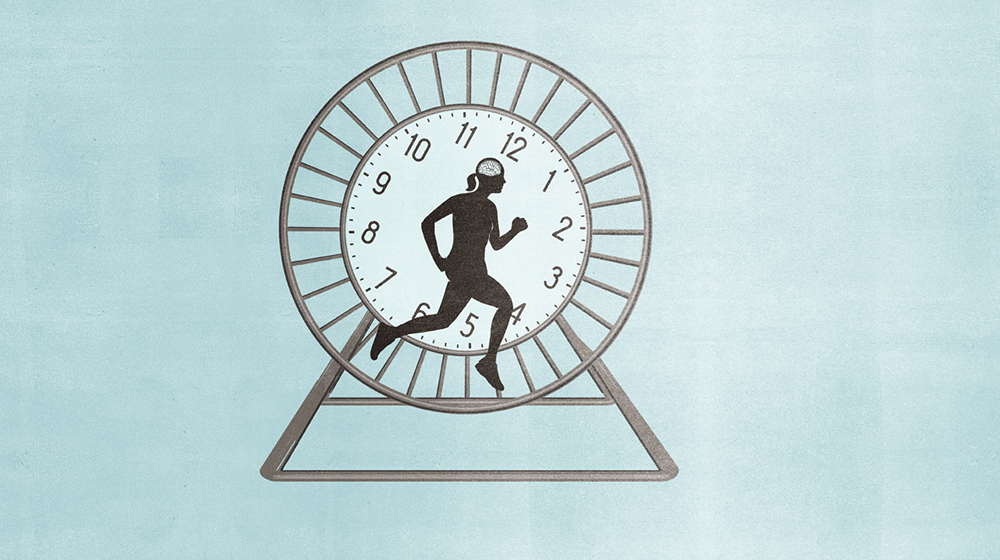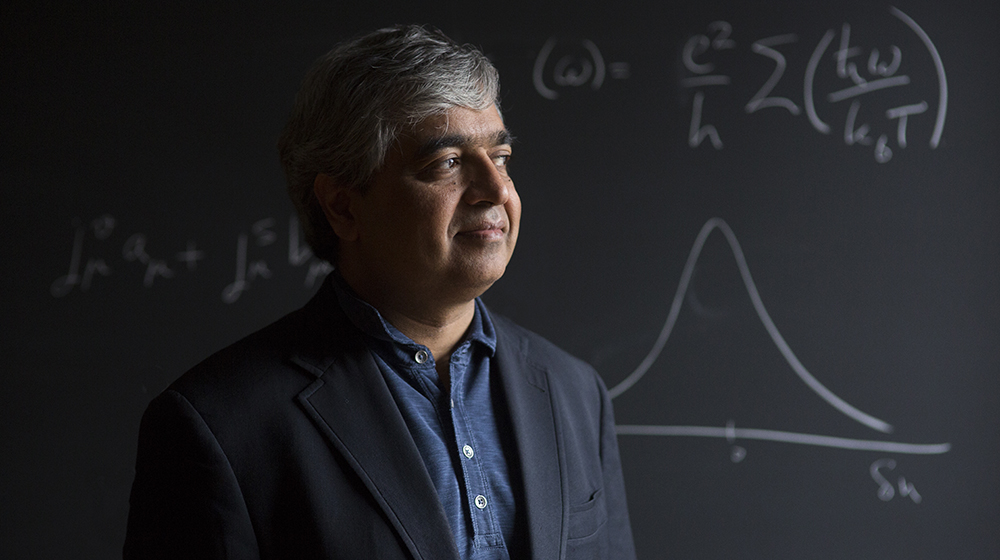New Clues to How the Brain Maps Time

Our brains have an extraordinary ability to monitor time. A driver can judge just how much time is left to run a yellow light; a dancer can keep a beat down to the millisecond. But exactly how the brain tracks time is still a mystery. Researchers have defined the brain areas involved in movement, memory, color vision and other functions, but not the ones that monitor time. Indeed, our neural timekeeper has proved so elusive that most scientists assume this mechanism is distributed throughout the brain, with different regions using different monitors to keep track of time according to their needs.
Over the last few years, a handful of researchers have compiled growing evidence that the same cells that monitor an individual’s location in space also mark the passage of time. This suggests that two brain regions — the hippocampus and the entorhinal cortex, both famous for their role in memory and navigation — can also act as a sort of timer.
In research published in November, Howard Eichenbaum, a neuroscientist at Boston University, and collaborators showed that cells in rats that form the brain’s internal GPS system, known as grid cells, are more malleable than had been anticipated. Typically these cells act like a dead-reckoning system, with certain neurons firing when an animal is in a specific place. (The researchers who discovered this shared the Nobel Prize in 2014.) Eichenbaum found that when an animal is kept in place — such as when it runs on a treadmill — the cells keep track of both distance and time. The work suggests that the brain’s sense of space and time are intertwined.
The findings help to broaden our understanding of how the brain’s memory and navigation systems work. Perhaps both grid cells and other GPS-like cells aren’t tuned only to space but are capable of encoding any relevant property: time, smell or even taste. “It probably points to a broad thing the hippocampus does,” said Loren Frank, a neuroscientist at the University of California, San Francisco, who studies memory and the hippocampus. “It figures out the relevant axis for encoding experiences and then uses the cells to map those experiences.”
These maps in turn construct a framework for memory, providing an organizing system for our never-ending series of past experiences. “The hippocampus is this grand organizer of memories in space and time,” Eichenbaum said. “It provides a spatiotemporal framework onto which other events are applied.”
Time Tiles
To study how the hippocampus monitors time, scientists train rats to run on a wheel or tiny treadmill. This setup holds the animal’s location and behavior constant, so that researchers can focus on the neural signals linked to time. (Rats are too fidgety to sit still, so running helps standardize their normally twitchy behavior.) Electrodes implanted deep in the brain record when different cells fire.
In Eichenbaum’s experiments, a rat runs on the treadmill for a set period — say, 15 seconds — and then gets a reward. As the animal repeats the cycle over and over, its brain learns to track that 15-second interval. Some neurons fire at one second, others at two seconds, and so forth, until the 15 seconds have elapsed. “Each cell will fire at a different moment in time until they fill out the entire time interval,” Eichenbaum said. The code is so accurate that researchers can predict how long an animal has been on the treadmill just by observing which cells are active. Eichenbaum’s team has also repeated the experiment, varying the treadmill’s speed, to make sure the cells aren’t simply marking distance. (Some of the cells do track distance, but some seem linked solely to time.)
Although these neurons, dubbed “time cells,” are clearly capable of marking time, it’s still not clear how they do it. The cells behave rather like a stopwatch — the same pattern of neural activity repeats every time you start the clock. But they are more adaptable than a stopwatch. When researchers change the conditions of the experiment, for instance by extending the running duration from 15 to 30 seconds, cells in the hippocampus create a new firing pattern to span the new interval. It’s like programming the stopwatch to follow a different time scale altogether.
Moreover, time cells rely on context; they only mark time when the animal is put into a situation in which time is what matters most. When other variables come into play, the same cells behave differently. Allow a rat to explore a new environment, for example, and these same cells will map themselves to space; a particular cell will fire every time the animal is in a specific location rather than doing so at a certain time.
The Brain’s Space-Time Matrix
Eichenbaum’s work dovetails with a 15-year trend in neuroscience research that suggests the hippocampus is more flexible than scientists expected. Researchers traditionally thought of it as a mapmaker — place-encoding cells were discovered 40 years ago — but growing evidence suggests it can encode other types of information as well. According to the newest picture, place cells can map not just space but other relevant variables. Time is one of them, but others are possible. For example, “a wine taster might have a space of wine tastes and smells,” Frank said.
But many scientists still view the hippocampus as a largely spatial structure. According to their argument, neural circuitry evolved to keep track of location, and everything else is just recorded on top of it. “The hippocampus provides a code that is fundamentally spatial in nature,” said Bruce McNaughton, a neuroscientist at the University of California, Irvine.
Eichenbaum’s findings challenge this viewpoint, but they don’t bury it. “What’s definitely clear is that place cells can represent information beyond place,” said David Foster, a neuroscientist at Johns Hopkins University. “But what’s less clear is whether they can code for the pure passage of time.”
In the timed treadmill experiments, the rats appear to be doing something very much like counting. But are these cells marking the passage of time itself, or are they responding to something else that merely looks like time? “We don’t know the driving principle that tells cells to fire at a specific point, but I don’t think it’s time,” said Eva Pastalkova, a neuroscientist at the Howard Hughes Medical Institute’s Janelia Research Campus in Ashburn, Va. “It’s not precise enough; they are not like ticking clocks.”
György Buzsáki, a neuroscientist at New York University’s Neuroscience Institute whose lab did some of the first experiments exploring how the hippocampus tracks time, proposes that rather than monitoring time itself, these cells are doing something else — remembering a path through a maze or plotting the animal’s next move. Both memories and future plans unfold in time, so time cells may simply reflect this mental activity.
“That’s the number-one problem for me: Are there dedicated neurons in the brain doing nothing else but keeping track of time?” Buzsáki said. “Or do all neurons have functions that happen in sequential order, which for the experimenter can be translated into time?”
Buzsáki points out that it may not even make sense to think of hippocampal cells as independently coding for space or time. The human brain often considers time and distance interchangeably. “If one asks how far New York is from LA, the answers you get vary: 3,000 miles, six hours by flight,” he said. “In older language, distances were typically given by time — the days it takes to go from one valley to another — since it was not distance but the number of sunsets that was easy to calculate.”
For Buzsáki, the issue goes beyond neuroscience and reaches into physics. Physicists consider space-time as a cohesive, four-dimensional entity, a fabric upon which the objects and events of the universe are embedded. “Neuroscience must converge back to the old problem of physics: Are there place and time cells? Or is there only a single time-space-continuum representation in the brain?” Buzsáki said.
Memory Maps
Eichenbaum is less concerned with these abstract questions. His goal is to unpack the role time plays in forming memories. “When you recall what you did this morning, you remember events in the order in which they occurred,” he said. “How does the hippocampus organize memories in time?”
People with damage to the hippocampus often can’t make new memories — the famous patient H.M., who had a lobotomy to remove much of that part of the brain, introduced himself to his doctor over and over again each day. But these patients also have trouble remembering the sequence of words or objects presented in an experiment. “How does the hippocampus support the ability to remember the temporal order of a sequence of events?” Eichenbaum said.
Eichenbaum envisions time cells as providing a timeline onto which sequential events are attached to represent an experience. If memories are a movie, he said, time cells are what puts the individual frames in order. His team is planning experiments that will intersperse time delays with different events, to see how time cells modify their code to remember the order in which the events occurred. “I don’t think the hippocampus is a clock,” he said. “But it’s using a clock to map out when things happened in a memory to keep them in order.”
This article was reprinted on TheAtlantic.com, Wired.com, and BusinessInsider.com.



